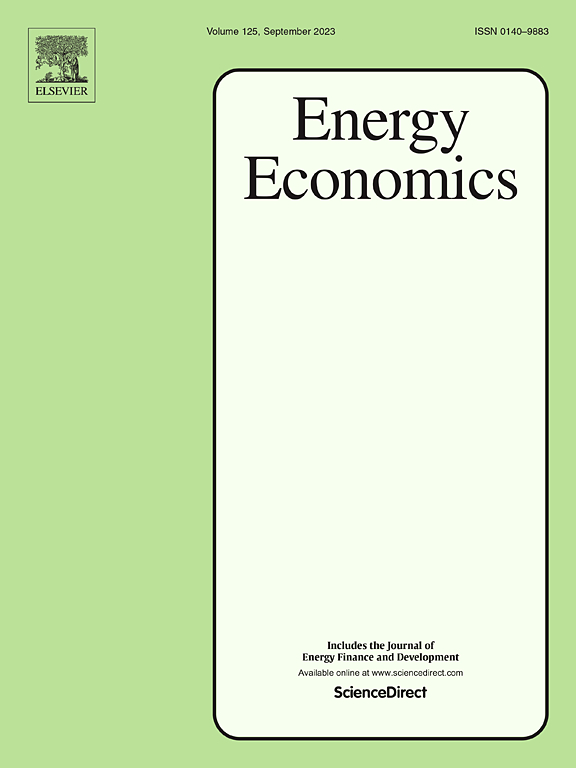What REALLY drives clean energy stocks - Fear or Fundamentals?
IF 13.6
2区 经济学
Q1 ECONOMICS
引用次数: 0
Abstract
This study investigates the relationship between the S&P Global Clean Energy Index and novel factors based on the GDELT Database, such as global news confidence levels, environmental sentiment, media coverage preferences in the US and China, and the ratio of environmental to overall reporting. We identify variables sourced from recent literature. Using the Isolation Forest method to select potential explanatory variables, Extreme Bounds Analysis reveals that “Fear” factors such as media sentiment and confidence show consistent and significant correlations with the S&P Global Clean Energy Index. These findings highlight the influential role of media sentiment in driving market confidence and industry growth. In contrast, some traditionally popular “Fundamental” factors, such as the Global Financial Stress Indicator, Green Bond Index, and US Dollar Index, lack robustness. While they appear reliable under normal distribution models, they exhibit substantial uncertainty under alternative models, limiting their explanatory power.
驱动清洁能源股的真正因素是什么——恐惧还是基本面?
本研究基于GDELT数据库,考察了标普全球清洁能源指数与新因素之间的关系,如全球新闻信心水平、环境情绪、美国和中国的媒体报道偏好以及环境与整体报道的比例。我们从最近的文献中确定变量。使用隔离森林方法选择潜在的解释变量,极限边界分析显示,“恐惧”因素,如媒体情绪和信心,与标普全球清洁能源指数表现出一致和显著的相关性。这些发现突出了媒体情绪在推动市场信心和行业增长方面的重要作用。相比之下,一些传统上流行的“基本面”因素,如全球金融压力指标、绿色债券指数和美元指数,缺乏稳健性。虽然它们在正态分布模型下显得可靠,但在替代模型下却表现出很大的不确定性,限制了它们的解释力。
本文章由计算机程序翻译,如有差异,请以英文原文为准。
求助全文
约1分钟内获得全文
求助全文
来源期刊

Energy Economics
ECONOMICS-
CiteScore
18.60
自引率
12.50%
发文量
524
期刊介绍:
Energy Economics is a field journal that focuses on energy economics and energy finance. It covers various themes including the exploitation, conversion, and use of energy, markets for energy commodities and derivatives, regulation and taxation, forecasting, environment and climate, international trade, development, and monetary policy. The journal welcomes contributions that utilize diverse methods such as experiments, surveys, econometrics, decomposition, simulation models, equilibrium models, optimization models, and analytical models. It publishes a combination of papers employing different methods to explore a wide range of topics. The journal's replication policy encourages the submission of replication studies, wherein researchers reproduce and extend the key results of original studies while explaining any differences. Energy Economics is indexed and abstracted in several databases including Environmental Abstracts, Fuel and Energy Abstracts, Social Sciences Citation Index, GEOBASE, Social & Behavioral Sciences, Journal of Economic Literature, INSPEC, and more.
 求助内容:
求助内容: 应助结果提醒方式:
应助结果提醒方式:


